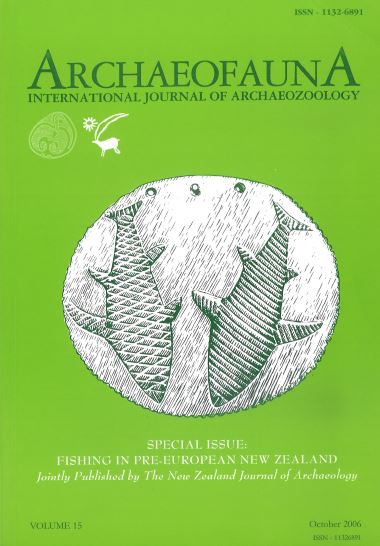Keywords:
Fish, fishing, diet, marine environment, subsistence, prehistory, New ZealandAbstract
New Zealand was first discovered less than 1,000 years ago by people from Eastern Polynesia , who were ancestors of the present New Zealand Maori. They were the descendants of people with a long maritime tradition, who took their first steps into the Oceanic world east of New Guinea some 35,000 years ago. By the time these people had settled the far flung islands of the Pacific and reached New Zealand they possessed advanced fishing technology and deep knowledge of fish habits and ecology. This volume reviews the current state of knowledge of the archaeozoology of fishing in prehistoric New Zealand . It begins with preliminary sections describing the tropical Pacific background to New Zealand archaeology, and the methodologies which are used in New Zealand relating to fishing and the analysis of fish remains. This is followed by a description of the New Zealand fishery, and the species which were caught by prehistoric M?ori. A database in the Museum of New Zealand contains information on fish remains from 126 archaeological sites covering all regions and periods in New Zealand (total MNI=40,400). Although about 750 species are present in New Zealand waters, only about 35 occur in prehistoric catches, and of these only 6 occur with abundances over 7%. These are: barracouta, Thyrsites atun (Gempylidae); blue cod, Parapercis colias (Mugiloididae); snapper, Pagrus auratus (Sparidae); wrasses (Labridae); red cod,Pseudophycis bachus (Moridae); and greenbone, Odax pullus (Odacidae). Together these make up 85% of all fishes caught in prehistoric times. The technology and material culture associated with these prehistoric catches are described, tracing the knowledge of cordage and knots, netting and fish hooks, canoe design, fish preservation and cooking methods. Special attention is given to the functional attributes of the rotating hook, so common throughout Oceania . The economic basis of prehistoric M?ori society varied markedly in New Zealand from horticultural people in the north to hunter-gatherers in the south. Regionalism in fish catches is examined, and although a biogeographical base to this can be identified, there is also a strong cultural expression over the top of it. A large section of the volume is concerned with changes in fish catches over archaeological time. Two aspects are considered — changes in relative abundance of fish types over time, and changes in size-frequency diagrams over time. It is found that New Zealand-wide trends have very little meaning, but that changes relating to the activities of essentially individual prehistoric communities show significant trends. These changes are presented after first considering climate change over the last 1,000 years and, in particular, the way that this affected surface sea water temperatures. There is increasing evidence that a Little Ice Age was important in New Zealand , resulting in dramatic changes in fish recruitment rates, and in one case extinction of a spawning population. This was the genetically distinctive snapper population in Tasman Bay in the northern South Island . This is reflected in the absence of snapper in prehistoric catches in this area during the period of the Little Ice Age. Of special interest is the finding that sustained predation in many parts of New Zealand resulted in increasing fish size over archaeological time. This is attributed to the widespread Polynesian custom of taking all fish, no matter how small, putting pressure on juveniles to increase their growth rate. This conclusion is supported by experimental research on preferential targeting of fish of different sizes, resulting in rapid evolution by genetic selection. The role of fish in early New Zealand diet is then considered, bearing in mind fundamental aspects of human nutritional needs. It is shown that protein was effectively super-abundant in prehistoric New Zealand , largely because of the wealth of marine foods available, and that the more important consideration was access to fat and/or carbohydrate foods. Isotope research on human bone collagen shows that food deriving from the marine environment varied from about 11% for inland people to 61% for some coastal peoples. The final part of the volume is concerned with modelling human predation and the effect on marine environments. It is suggested that archaeologists need to be a great deal more careful in this field in future and work from the bottom up, not the top down. In particular, optimal foraging theory is criticised as naive and not well founded in evidence in the case of marine food gathering. The widespread custom of `slash and burn and fallow' has a counterpart in marine harvesting whereby people take all specimens down to very small size, depleting an area of its biomass, and then move away to a new settlement, leaving the former area to recover over long periods. There is considerable evidence for such a pattern of exploitation of the marine environment. This is a conservation strategy not often considered by archaeologists or in modern fisheries management. Prehistoric M?ori fishermen in New Zealand were clearly extremely knowledgeable about all aspects of the New Zealand fishery. The abundance of fish available meant that all necessary food could be obtained in shallow waters, more than 80% being caught less than 100 metres from the shore.

